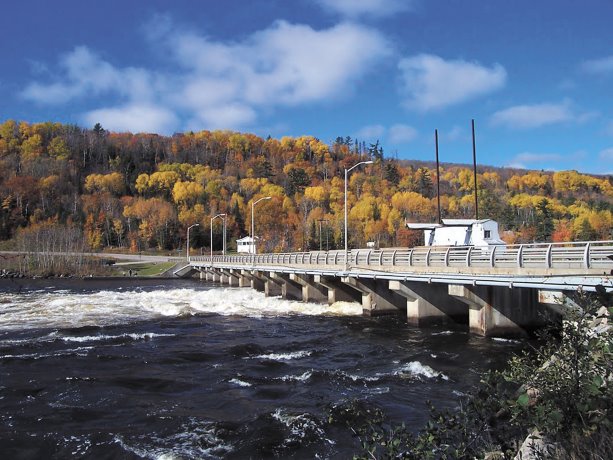Work on the $20.9-million Timiskaming Dam replacement project is expected to get underway in earnest this summer once the necessary permits and approvals have been signed off.
Doug Dally, North America Construction project control coordinator, said work was slated to start last year but was delayed because of the myriad of regulation and legislation at both the federal and provincial level governing waterways. Public Works Canada (PWC) is in the process of securing the necessary permits from the other agencies.
"We’re now hoping to get the coffer dam started downstream of the existing dam around July this year," he said.
With the coffer dam in place, crews can start work on inspecting the apron around the front of the existing dam to ascertain its condition.
"We think there’s some water leaking under the dam so there may have to be some grouting but that’s one of the unknowns for us right now. We won’t know until we get in there."
The project is funded by the federal government and Ontario governments and will replace the original dam section on the Ontario side built between 1909 and 1913.
The permitting paperwork alone seems to be a project in itself. PWC’s website shows a long list of assessments, including archaeological, natural environment, environmental effects evaluation, a geotechnical investigation and analysis, a hydraulic analysis and study, a heritage assessment and a designated substance survey.
Add in the Navigable Waters Act requirements and delays are hardly surprising.
The project was never going be easy from the outset given its location and the challenge of working around the waterway. It’s one of two dams in the Timiskaming Dam Complex which maintain water levels to around Lake Timiskaming upstream and the downstream Ottawa River.
The project is further complicated by a roadway which runs across the tops of the dams between Ontario and Quebec connecting Highway 63 with Highway 101. The road will also be realigned as part of the project and there’s also an adjacent pedestrian pathway and a natural gas pipeline.
The complex is about 65 kilometres northeast of North Bay on the border between Quebec and Ontario. The two dams are on either side of Long Sault Island in the Ottawa River.
The Quebec component is on that province’s side of the border and will be used for water control while the Ontario side dam is under construction and will be studied for future replacement as well.
A proposal to install a hydro-generating turbine as part of the new dam structure was rejected when a KPMG study found it would not be economically viable.
The existing dams are concrete structures featuring sluice bays with removable stop logs and because of their age need replacement.
Obviously, the coffer dam is critical to creating some space to work, said Dally. The plan is to use commercial dive teams to install fabric across the coffer dam to trap any silt being stirred up from the river bed from spreading downstream.
"There’s also a plan to capture and release any fish which get caught in the coffer dam as well," he said. "After we inspect the apron and re-grout where needed we’ll look at tying the new dam into the existing abutments and looking at how much erosion there is."
With the new dam in place it is hoped demolition of the existing dam can start.
"We don’t have the final proposal in place yet and they are still working on it but it’s hoped they can start demolition and use the rubble as a roadway for access and then scoop it all out," he said.
"It’s pretty old so we don’t know what materials are there and how much rebar there is or isn’t but we’re also hoping to recover some of that concrete to use as riprap along the shoreline."
Access is also somewhat restricted from March to July because of the high water run-off and the need to control the water flow, he added. Work will continue as long as possible over the colder months.
"Whatever we do with the coffer dam it has to be out before March of next year for the season," he said.
The new dam will be built a few metres south of the existing dam and while construction was slated to wrap up by 2016, the delayed start will push that back.



Recent Comments
comments for this post are closed